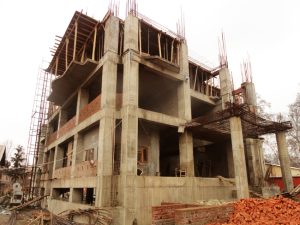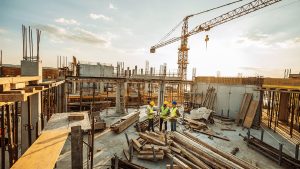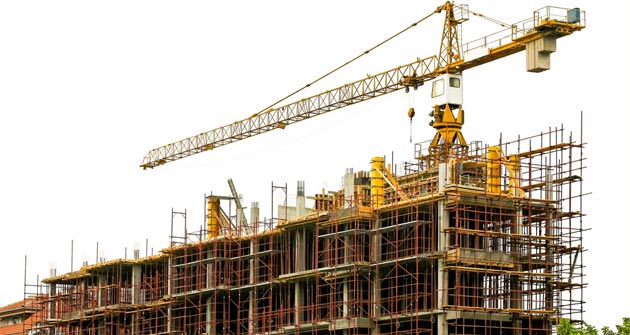What is Building Construction and Services?
Building construction and services play a vital role in shaping the physical environment in which we live and work. From the towering skyscrapers that define city skylines to the humble residential homes we call our own, construction projects are at the heart of creating functional and aesthetically pleasing spaces. In this article, we will explore the fundamentals of building construction and services, examining the various aspects involved and their significance in the industry.
Building Construction: A Foundation for Structure
Understanding the Basics
Building construction encompasses the entire process of creating a structure, starting from the conceptualization and design phase to the final touches and handover. It involves a multitude of disciplines and professionals working together to bring a vision to life.
Construction projects typically begin with architects and engineers who collaborate to design the structure, considering factors such as functionality, aesthetics, and structural integrity. Once the design is finalized, the construction phase commences.
Key Components of Building Construction
Building construction involves several essential components that come together to form a complete structure. These components include:
1. Foundation and Structural Framework
The foundation provides stability and supports the weight of the building. It is usually made of concrete and ensures that the structure is firmly anchored to the ground. The structural framework consists of columns, beams, and slabs that form the skeleton of the building, providing support and load distribution.

2. Walls and Roofs
Walls define the boundaries of a building, separating interior spaces and providing privacy. They can be made of various materials, such as concrete, bricks, or wood. Roofs protect the building from weather elements and play a crucial role in maintaining its integrity. Different types of roofs, including flat roofs, pitched roofs, and domes, offer distinct functionalities and aesthetics.
3. Plumbing and Electrical Systems
Plumbing systems encompass the network of pipes, drains, and fixtures that ensure the proper supply and disposal of water and waste within a building. Electrical systems include the wiring, outlets, and fixtures necessary for providing power throughout the structure.
4. HVAC Systems
Heating, ventilation, and air conditioning (HVAC) systems are responsible for regulating temperature, air quality, and humidity within a building. These systems provide comfort and maintain a healthy indoor environment.
Building Services: Enhancing Functionality
Introduction to Building Services
Building services refer to the various systems and installations that enhance the functionality, safety, and comfort of a building. These services go beyond the structural aspects of construction and are essential for creating an efficient and habitable space.
Key Building Services
Building services encompass a wide range of installations and systems. Here are some key services:
1. Plumbing and Sanitary Services
Plumbing and sanitary services involve the installation and maintenance of water supply systems, drainage systems, and sanitary fixtures within a building. These services ensure the availability of clean water for various purposes, such as drinking, bathing, and sanitation, while effectively managing wastewater disposal.

2. Electrical and Lighting Systems
Electrical services encompass the installation, maintenance, and management of electrical systems within a building. This includes wiring, switches, outlets, and electrical panels. Lighting systems are also an essential aspect of building services, providing illumination for various spaces and ensuring safety and functionality. For sunshine coast builders see more.
3. Fire Protection and Safety Systems
Fire protection systems are crucial in ensuring the safety of occupants and preventing the spread of fires within buildings. These systems include fire alarms, smoke detectors, fire extinguishers, sprinkler systems, and emergency exits. Building services also involve the implementation of safety measures, such as security systems, access control, and surveillance systems.
4. Communication and Data Services
Communication and data services are essential for modern buildings, providing connectivity and enabling the efficient flow of information. These services include the installation of telephone lines, data networks, Wi-Fi systems, and audio-visual systems. They ensure seamless communication and facilitate the use of technology within the building.
5. Elevators and Escalators
Elevators and escalators are integral to tall buildings, providing vertical transportation for occupants and facilitating accessibility. Building services include the installation, maintenance, and modernization of these systems, ensuring smooth and efficient movement within the structure.
The Importance of Building Construction and Services
Creating Functional and Sustainable Spaces
Building construction and services are essential for creating functional and sustainable spaces that meet the needs of occupants. Properly designed and constructed buildings provide comfortable living and working environments, promoting productivity, well-being, and safety.
Ensuring Efficiency and Longevity
Through effective construction techniques and quality materials, buildings can be built to withstand various environmental conditions and have a longer lifespan. Building services, such as energy-efficient HVAC systems, proper insulation, and sustainable design practices, contribute to the efficient use of resources and reduce environmental impact.
Compliance with Regulations and Standards
Building construction and services adhere to stringent regulations, codes, and standards to ensure the safety and well-being of occupants. Compliance with building codes and regulations is crucial in mitigating risks, such as fire hazards, structural failures, and health concerns.
Economic and Societal Impact
Building construction and services have significant economic and societal impacts. Construction projects create job opportunities, stimulate economic growth, and contribute to the development of infrastructure. Well-designed and functional buildings also enhance the aesthetic appeal of cities and communities, improving the overall quality of life.
In Conclusion
Building construction and services are integral to the creation of the physical spaces we inhabit. They involve the collaborative efforts of architects, engineers, contractors, and various specialists to bring architectural designs to life. Building construction encompasses the construction of the structural elements, such as foundations, walls, roofs, and the installation of vital systems like plumbing, electrical, HVAC, and fire protection.

